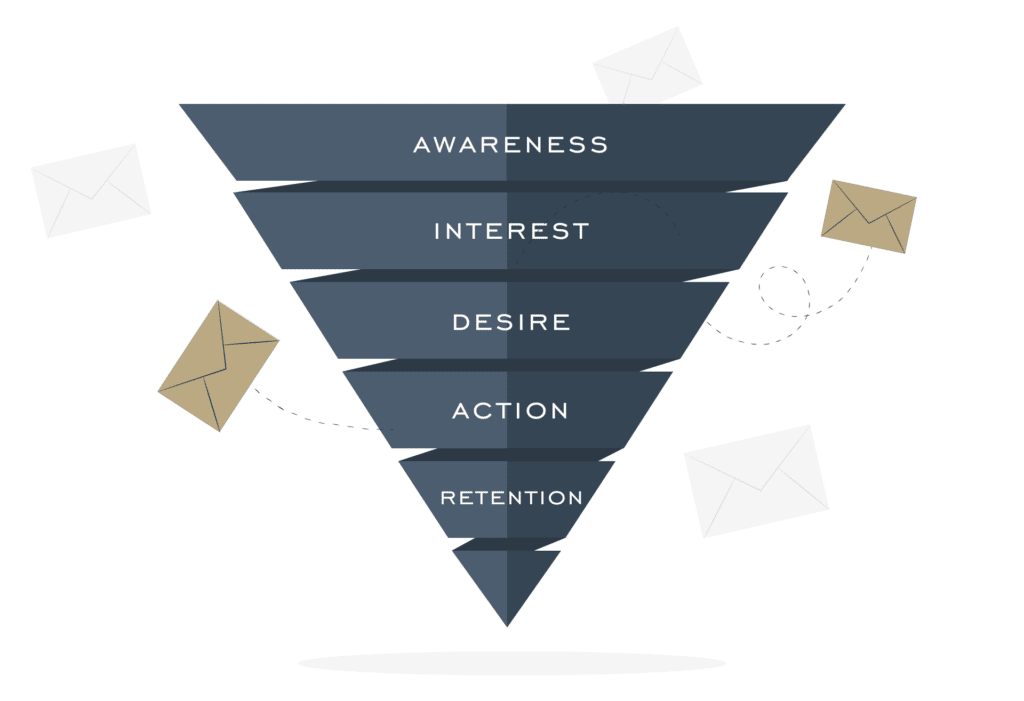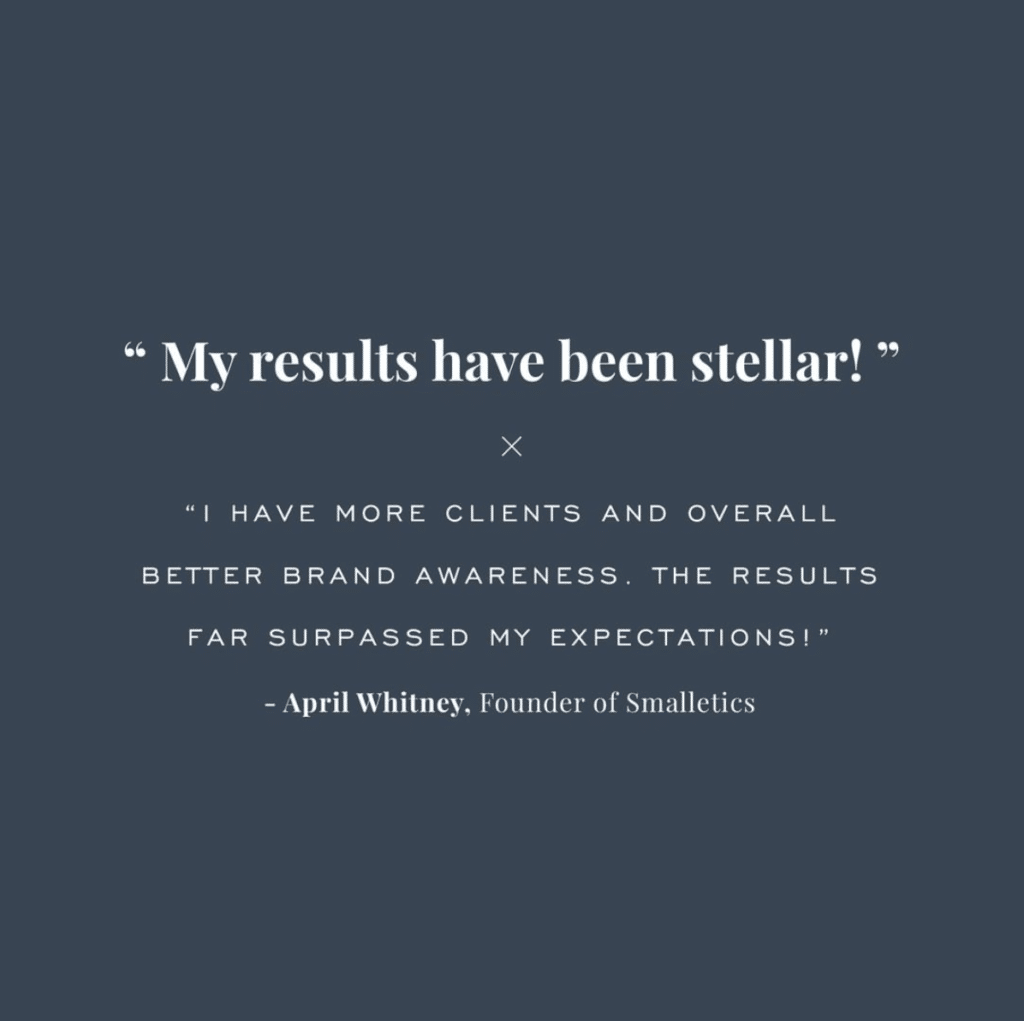One of the first realities of marketing we have to face is that not everyone who’s exposed to your marketing is going to become a customer—even if you’re making the best marketing effort possible.
And that’s why we always talk about the marketing funnel…
What Is A Marketing Funnel?
The best way to understand the idea behind a marketing funnel (also called a sales funnel or a conversion funnel) is to actually picture a funnel in your mind: It’s wide at the top, but it gets narrower the farther down it goes. That’s pretty much how your customer pool is going to be, and you should focus your marketing accordingly.
When you first get people’s attention, it’s going to be a broad group of people. But then you focus your marketing efforts on a more specific demographic—that is, the people who will really benefit from what you have to offer.
The idea of a marketing funnel has been around in some form since the late 19th century. That’s when advertising legend E. St. Elmo Lewis created what he called the AIDA Model, which tracks a customer from the moment they learn about a brand until they make the purchase.
In this case, AIDA stands for Awareness, Interest, Desire, and Action. But every marketer has their own terminology for the different stages of a marketing funnel (more on that in a second). You should think of the funnel as a customer’s journey and provide value to those customers each step of the way.
Let’s say you start by getting people to your website via social media. From there, they are able to take advantage of a freebie, whether it’s a trial subscription or a downloadable sample of your product.
They use this freebie, enjoy it, and start to learn about why what you have to offer is a worthwhile investment for them. From there, this customer makes a purchase, and you focus on making them a loyal customer for life.
Got it? Now let’s take a look at each one of these stages of the funnel in detail.

The Stages Of A Marketing Funnel
Some marketers love to talk about marketing at the top of the funnel. Marketing at the top of the funnel means your marketing efforts—specifically, the content you create, from digital ads to blog posts—should focus on bringing people into your funnel rather than targeting them at a later stage. But don’t be so hasty! Marketing at the top of the funnel is like breakfast cereal: It’s part of a complete marketing strategy but isn’t necessarily sufficient on its own.
In other words, if you limit yourself to marketing at the top of the funnel, you’re counting on people to become customers as soon as they’re exposed to your brand. Think about how many times you bought a product or service just because you saw an ad or read a blog post. It rarely happens that way!
Instead, a smart marketing sales funnel focuses on high-quality content through each of the marketing funnel stages so customers can continue to develop a relationship with the brand.
Here’s what you should be doing at each stage of your marketing funnel:
Awareness
The awareness stage is where your audience finds out about your business—they become aware of you. But they don’t know at this point that you’re able to meet the needs they have.
So you need to demonstrate to them that you’re legit. Provide content that will educate them about your field of expertise. This content should be engaging, interesting, and entertaining—it’s something of value even to people who have no plans to patronize you whatsoever.
Great content ideas at this point include blog posts, free webinars, listicles of tips and tricks, or even downloadable infographics or other media.
Your awareness stage is when you should be bringing in as many people as you can. Neil Patel points out that losing people along each stage of the funnel is normal, so bringing in more people means a greater number you can potentially retain as others drop out.
Interest & Desire
Next comes what the AIDA Model describes as interest and desire. Some marketers call it the consideration stage. This is where the people in your funnel start to decide whether you’re a good fit for them—they’ll be learning about your business, what you offer, what sets you apart, and why your customers trust you.
This is a great stage for providing content like testimonials and reviews, some in-depth how-to content (especially because this shows people your specific approach to solving problems), a list of FAQs, or even case studies and statistics that point to your success.
Action (or Conversion)
This next stage is what the AIDA Model calls the action stage but many marketers prefer to call the conversion stage. This is when you want to go from potential customer to paying customer—you’re giving them a specific action they can take (buy).
At this point in your marketing sales funnel, you know that they’re interested. They know what you have to offer. Now you need the content that makes them say yes. You need the content that will convert them.
Your content at this stage could be something as simple as a pricing page (with special rates if you’re offering them), a success story or two, and even a demonstration of how easy your product is to use.
Retention
We know this stage isn’t included in all sales marketing funnels, but we think it’s pretty important. After you get a customer to take action and make a purchase, you want to retain them. More importantly, you want to solidify their positive experience so they will tell others about you. In other words, they become ambassadors for your brand. And they come back later to make another purchase from you in the future.
Content for the retention part of your marketing funnel could include follow-up emails, help guides, and announcements of new products or services you’re adding.
The Goal of a Marketing Funnel
When you’re creating content for your marketing funnel, remember that your goal is to get people to connect with your business and understand the value in what you have to offer. Ultimately, you want them to see so much value in what you have to offer that they’re willing to pay for it.
But there are secondary goals to a marketing funnel as well. Marketing funnels give you a chance to analyze your marketing strategy. Take a look at what people are attracted by the initial stage of your marketing funnel—the part with the broadest audience.
Then watch to see whether you’re losing people along your funnel. Losing some people is normal. But if you’re losing more than you should, or if nobody is making it from the opening of your funnel to the very end, then you have what’s known as a funnel leak. What is it about your marketing funnel strategy that’s turning them off?
Finally, what people ultimately make a purchase? How are they different from the people you initially attract but don’t make it all the way through? Is this the target audience you expected, or are you surprised?
Take a look at your marketing funnel strategy and ask yourself what about your content is working and what isn’t. You can always hone your content and your strategy from there.
Let’s Talk Further
At Till, we love marketing funnels—we love strategizing about them, analyzing them, tweaking them, but most of all, we love watching them be successful. So if you’re daunted by the idea of a marketing funnel, or if you just need further guidance, we’re happy to help.
Reach out to us today by booking a discovery call and let’s get started together.







